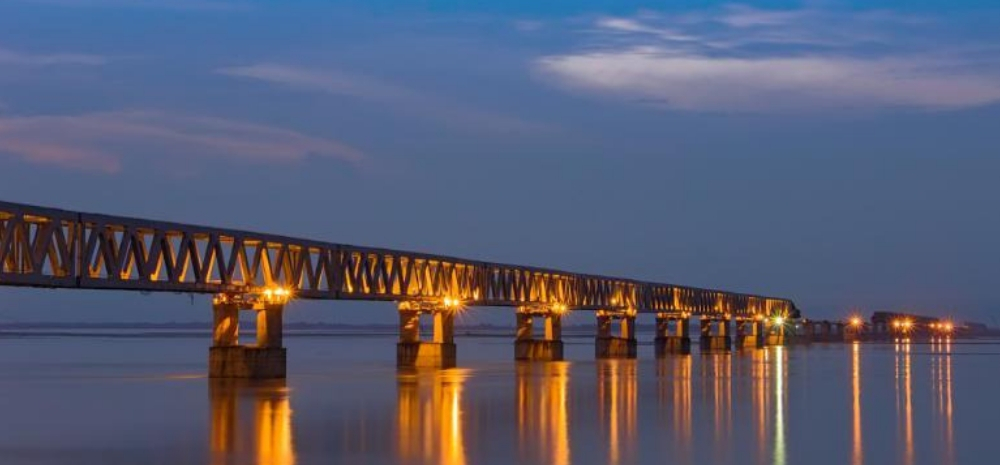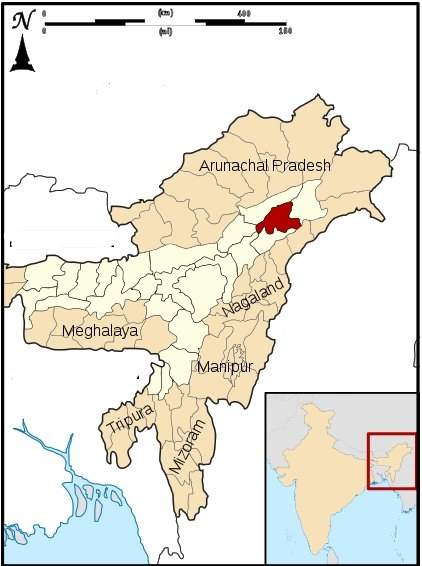5 Mind-blowing Facts About Bogibeel Bridge, India’s Longest Railroad Bridge Where Even Army Tanks Can Move!
This bridge will save 165 kms of travel, and Rs 10 lakh of fuel, everyday for travellers.

Today, PM Modi will inaugurate Bogibeel Bridge, which has been declared as India’s longest railroad bridge. Hailed as an engineering wonder, this took 21 long years to get completed.
What is so special about this railroad bridge?
Checkout 5 astonishing facts no one told you!
Contents
Fact #1: Why It Took 21 Years To Complete?
The concept of Bogibeel Bridge was part of the 1985 Assam Accord and was sanctioned in 1997-98. On January 22, 1997, then PM HD Deve Gouda laid the foundation, and then work began on April 21, 2002, under late PM Atal Bihari Bajpayee.
This bridge has been built over river Brahmaputra, whose turbulence and momentum is well known. Due to this, work on the bridge could have been done only between November and March. This delayed the work and the deadline extended as maps, designs kept on altering.
Besides, due to “political unwillingness”, and red-tape blocks, the construction was slow and uneven.
Fact #2: Why Its Budget Increased 3-Times
Due to the delay of 21 years, the overall budget of this bridge increased by three times. In 1997, when the foundation stone was laid, the budget allocated was Rs 1,767 crore, which increased to Rs 5,900 crore by the time it was finished.
Fact #3: Why This Is An Engineering Marvel?
4.94 kms long Bogibeel Bridge has become India’s longest railroad bridge, beating Kerala’s Vembanad rail bridge which is 4.62 kms long.
It has a serviceable period of 120 years, and this fully welded bridge is India’s first such bridge which completely adheres to the European standard of welding. Steel Authority of India Ltd (SAIL) has alone supplied around 34,000 tonnes of steel for the construction.
Railway Minister Piyush Goel shared some stunning visuals:
Take a look at the stunning visuals of how the iconic Bogibeel Bridge, India’s longest rail-cum-road bridge, was built by the best of our engineering minds pic.twitter.com/3xrPltY6Ol
— Piyush Goyal (@PiyushGoyal) December 21, 2018
It has 39 girders of 125 meter and 2 girders of 33-meter span, having steel floor system for railway tracks, and concrete for road track. While railway line is double, road is three-lane.
Now, the river has a channel width of 600 to 900 meters, and it was a challenge transporting concrete for the construction. To overcome this, raw materials was transported via pipeline laid over buoys, an innovation in bridge construction.
Fact #4: What Is Its Military & Civilian Significance
Bogibeel Bridge will reduce time travel between Tinsukia in Assam to Arunachal Pradesh’s Naharlagun by 10 hours.
However, besides civilian impact, this is an important military accomplishment as well.

To start with, the bridge has been made so powerful that military tanks can pass through them, without any hiccups. Strategically located, this bridge can help the Army to quickly mobilize troops to Kibithoo, Wallong, and Chaglagam on the Arunachal-China border.
Besides saving 10 hours of travel, this bridge will connect two remote national highways: NH-37 on the South Bank and NH-52 on the North Bank, and provide instant connectivity to remote parts of Assam such as Anjaw, Changlang, Lohit, Lower Dibang Valley, Dibang Valley and Tirap of Arunachal Pradesh.
Locals and tourists can save 165 kms due to this bridge, thereby saving fuel worth Rs 10 lakh, per day.
Fact #5: Controversy Over Name?
Local communities and political parties clashed over finalizing its name.
Members of Chutia dynasty threatened that if the name of the bridge is not named after Chutia dynasty queen Sati Sadhini, then 100 youths will jump into Brahmaputra river.
Multiple Ahom organisations protested along NH 37 near Siu-ka-Pha Bhavan in Dibrugarh, because they wanted this crucial bridge to be named after Ahom dynasty founder Chaolung Siu-ka-Pha.
Meanwhile ULFA chief Paresh Barua had demanded that this bridge should be named after Bishnu Prasad Rabha and Jyoti Prasad Agarwala, two cultural icons of Assam.
BJP workers demanded that the bridge be named as Atal Setu, because Atal Bihari Bajpayee had inaugurated its foundation. Several other tribes and communities demanded their own names for the bridge.
However, since Bogibeel was the name given to this idea, when The Dibrugarh Nagarik Sangha submitted petition to Prime Minister Morarji Desai in 1977, Bogibeel Bridge was finalized.
If you are from Assam or Arunachal Pradesh, then do share the sentiments associated with this crucial bridge, and why this bridge means so much for your state. We are looking forward to your comments!
